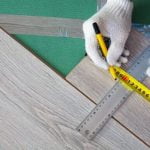In today’s digital era, mobile phones have become an integral part of our lives. From staying connected with loved ones to accessing important information, these devices serve as lifelines for communication. However, it can be incredibly frustrating when we experience poor mobile phone signal at home, leading to dropped calls and slow internet speeds. To ensure seamless connectivity and enhance our overall mobile experience, it is crucial to understand the importance of a strong mobile phone signal at home.
A strong mobile phone signal at home is vital for several reasons. Firstly, it ensures clear and uninterrupted voice calls without any disruptions or call drops. Whether we are speaking with family or conducting important business conversations, a strong signal guarantees that our message is conveyed accurately and without any interruptions.
Secondly, a strong mobile phone signal allows for fast and reliable internet connectivity. With the rise of streaming platforms, video conferences, and online gaming, having a stable internet connection has become more important than ever before. A weak signal can lead to buffering issues, slow download speeds, and lag in online activities – affecting both productivity and entertainment.
Lastly, a strong mobile phone signal provides peace of mind during emergencies. In critical situations where every second counts, being able to make swift emergency calls can save lives. An optimal signal strength ensures that we have access to emergency services whenever needed.
Now that we understand the importance of a strong mobile phone signal at home, let’s delve into the common reasons behind poor signals and explore effective solutions to improve connectivity in the sections ahead.
Common Reasons for Poor Mobile Phone Signals at Home
Poor mobile phone signals at home can be frustrating and disruptive, but understanding the common reasons for this issue can help identify the culprits and find solutions. There are several factors that can contribute to poor signal quality, including:
- Distance from Cell Tower: One of the main reasons for weak mobile phone signals at home is the distance from the nearest cell tower. The farther you are from a tower, the weaker your signal is likely to be. This problem is more common in rural or remote areas where cell towers are fewer and farther between.
- Building Materials: The materials used in your home’s construction can also affect mobile phone signals. Certain building materials like concrete, metal, and energy-efficient glass can block or weaken signals, leading to poor reception inside the house.
- Obstructions: Other physical obstructions such as trees, hills, tall buildings, and even large appliances within your home can disrupt or weaken mobile phone signals. These obstructions may interfere with signal propagation and prevent it from reaching your device effectively.
It is important to identify these culprits in order to effectively improve your mobile phone signal at home. To do so, you may consider conducting a signal strength test using different methods such as using apps designed for this purpose or checking signal bars on your device.
Additionally, staying updated with the latest technological advancements in improving mobile phone signals at home can help you explore new options for enhancing connectivity. By reducing interference and optimizing Wi-Fi signals through efficient router placement and utilizing boosters or extenders specifically designed to amplify mobile phone signals, you can enjoy seamless connectivity wherever you are in your home.
| Common Reasons for Poor Mobile Phone Signals at Home |
|---|
| 1. Distance from Cell Tower |
| 2. Building Materials |
| 3. Obstructions |
Conducting a Signal Strength Test
Ensuring a strong mobile phone signal at home starts with understanding the current signal strength. Conducting a signal strength test is crucial in identifying areas where the signal might be weak or non-existent. Fortunately, there are various methods available to determine the signal strength in different parts of your home.
One common method for conducting a signal strength test is by utilizing the phone’s built-in field test mode. This feature allows users to access detailed information about their network connection, including signal strength and quality. To access this mode on an iPhone, for example, one simply needs to dial *3001#12345#* and press the call button. This will bring up a menu from which they can navigate to “Field Test” and find information on their cellular network.
Another method for testing signal strength is by using mobile apps specifically designed for this purpose. These apps use algorithms to measure the signal strength in different areas of your home and provide you with real-time data. Popular examples include OpenSignal, Network Cell Info Lite, and RootMetrics. These apps often display the signal strength in numerical form or present it graphically on a map so that users can easily identify strong and weak areas within their home.
In addition to these methods, you can also utilize external devices such as signal meters or Wi-Fi analyzers that connect directly to your smartphone. These devices often provide more accurate and detailed information about not only cellular signals but also Wi-Fi networks. They allow you to scan different frequencies and bands, giving you a comprehensive overview of the entire wireless spectrum in your area.
By conducting a thorough signal strength test using one or more of these methods, you can gain valuable insights into where your mobile phone signals are strongest or weakest within your home. Armed with this information, you can then proceed with implementing targeted solutions to improve connectivity and enjoy seamless mobile phone usage throughout your living space.
Efficient Placement of Your Router
A strong Wi-Fi signal is crucial for improving mobile phone signal strength at home. The placement of your router plays a vital role in optimizing Wi-Fi signals and enhancing connectivity. Here are some tips to help you efficiently position your router for better mobile phone signal:
- Centralize the Location: Place your router in a central location in your home, preferably on the main floor or wherever you use your mobile phone most frequently. This allows for equal distribution of Wi-Fi signals throughout the house, reducing dead zones and weak signals.
- Avoid Obstructions: Ensure that the router is not blocked by walls, furniture, or appliances that may obstruct the Wi-Fi signals. Choose an open space with minimal obstructions to allow for maximum coverage.
- Elevate the Router: Positioning the router at an elevated location can help improve signal strength since radio waves generally travel downward. Consider mounting it on a wall or placing it on a high shelf or tabletop.
- Minimize Interference: Keep the router away from other electronic devices such as cordless phones, baby monitors, microwaves, and Bluetooth devices. These devices can interfere with Wi-Fi signals and impact signal strength.
- Adjust Antenna Positioning: If your router has external antennas, experiment with their angles to find the best position for improved signal strength. Positioning them vertically or at a 45-degree angle often works well.
By following these simple strategies and tips for efficient router placement, you can significantly enhance Wi-Fi signals and consequently improve mobile phone signal strength at home.
Utilizing Signal Boosters and Extenders
Signal boosters and extenders are effective tools for improving mobile phone signal strength and enhancing connectivity at home. These devices work by amplifying weak signals and extending their range, allowing for more reliable and consistent communication.
There are different types of signal boosters and extenders available in the market, each with their own set of features and capabilities. Some boosters require a physical connection to the phone or router, while others operate wirelessly. It is important to choose a booster or extender that is compatible with your specific mobile network and provider.
To effectively utilize a signal booster or extender, it is crucial to strategically place it in an area where the signal is weakest. This can be determined by conducting a signal strength test using one of the methods mentioned in the previous section. By placing the booster or extender in this location, it will be able to capture the weak signal and amplify it, resulting in improved signal strength throughout your home.
It is worth noting that while signal boosters and extenders can significantly improve mobile phone signal strength, they cannot create signals where none exist. In areas with extremely poor reception, such as remote rural locations or basements with thick walls, alternative options like femtocells or microcells may be necessary for a substantial improvement in connectivity.
| Type | Features |
|---|---|
| Signal Booster | – Amplifies weak signals
|
| Signal Extender | – Amplifies weak signals
|
Leveraging Wi-Fi Calling
One effective method to improve mobile phone signal at home is by leveraging the power of Wi-Fi calling. Wi-Fi calling allows you to make and receive calls using your internet connection, rather than relying solely on cellular network signals. This can significantly enhance phone signals, especially in areas where the cellular network coverage is weak.
To utilize Wi-Fi calling, you need a smartphone that supports this feature and a reliable Wi-Fi network at home. Most modern smartphones have built-in support for Wi-Fi calling, but it’s always a good idea to check your device’s specifications or contact your mobile service provider for compatibility information.
Once you have confirmed that your smartphone supports Wi-Fi calling, you can enable the feature in your settings menu. Typically, this is found under the “Phone” or “Connections” section of your device settings. Simply toggle the switch to turn on Wi-Fi calling. It’s important to note that enabling this feature may vary depending on the operating system and manufacturer of your smartphone.
By using Wi-Fi calling, you can experience improved call quality and connectivity at home, even if the cellular signal strength is weak in certain areas of your house. It allows you to make calls over a stable internet connection, reducing the chances of dropped calls or poor sound quality that may occur when relying solely on cellular signals.
In addition to enhancing phone signals, utilizing Wi-Fi calling can also help save on mobile data charges if you are on a limited data plan. By making calls over Wi-Fi instead of using cellular network data, you can effectively reduce data usage and avoid potential overage fees.
Overall, leveraging Wi-Fi calling is an excellent solution for improving mobile phone signal at home. It provides seamless connectivity and ensures that you can stay connected without interruptions or frustrating call drops due to poor cellular reception.
Exploring Alternative Options
In addition to signal boosters and extenders, another alternative option for improving mobile phone signals at home is the use of femtocells and microcells.
Femtocells and microcells are devices that provide a localized wireless signal within a limited area, typically within a home or small office. These devices work by connecting to your internet service provider’s network and using it to enhance the mobile phone signal.
One advantage of using femtocells and microcells is that they can greatly improve signal strength in areas with weak or no coverage. This means that even if you’re in a remote location or an area with poor network coverage, you can still enjoy reliable mobile phone connectivity within your home.
To set up a femtocell or microcell, you typically need to contact your mobile service provider and purchase the device from them. The provider will then guide you through the setup process, which usually involves connecting the device to your internet network and registering it with your mobile number.
It’s important to note that while femtocells and microcells are effective in improving mobile phone signals at home, they do have their limitations. These devices are designed for small areas, so they may not be suitable for larger homes or buildings with multiple floors. Additionally, certain providers may require additional fees for using these devices.
Overall, exploring alternative options like femtocells and microcells can be a viable solution for improving mobile phone signals at home, particularly in areas with weak or no coverage. By enhancing the localized signal strength within your living space, you can enjoy improved connectivity and seamless communication on your mobile devices.
Reducing Interference
Identifying Obstructions
One of the common reasons for poor mobile phone signals at home is the presence of obstructions that block or weaken the signal. Identifying these obstructions and finding ways to minimize their impact can significantly improve your mobile phone signal strength. Begin by examining your surroundings both indoors and outdoors to determine potential obstacles. Thick walls, metal structures, tall buildings, dense vegetation, and geographical features like hills or valleys can all contribute to signal interference.
Repositioning Your Router
In addition to identifying physical obstructions, it is important to consider the placement of your router as it plays a crucial role in enhancing mobile phone signal strength. Wi-Fi signals are closely tied to mobile phone signals, so optimizing your router’s placement can help improve both.
Keep your router elevated and ensure that it is positioned in a central location within your home. This allows for better coverage throughout your living space and minimizes the chances of signal loss due to physical obstacles.
Minimizing External Factors
External factors such as electronic devices, appliances, and even weather conditions can interfere with mobile phone signals. To reduce this interference, try keeping electronic devices like cordless phones and microwave ovens away from your router and mobile phone. These devices can emit electromagnetic radiation that can disrupt signal transmission.
Additionally, extreme weather conditions such as storms or heavy rain may negatively impact signal strength. While you cannot control the weather, being aware of its potential effects on your signal can be helpful in troubleshooting any disruptions.
By minimizing obstructions and external factors impacting mobile phone signals, you can improve connectivity at home and enjoy uninterrupted communication with friends, family, and colleagues. It is essential to understand the specific challenges present in your environment to effectively address them.
Remember that improving signal strength requires a combination of proper positioning of routers, elimination or repositioning of physical barriers, reducing interference from electronic devices, and staying informed about the latest technological advancements in signal enhancement. With these strategies, you can experience a noticeable improvement in your mobile phone signal strength and enjoy seamless connectivity at home.
Staying Updated
Introduction
Staying updated on the latest technological advancements is crucial in improving mobile phone signals at home. As technology continues to evolve, so do the methods and devices used to enhance signal strength and improve connectivity. In this section, we will explore some of the latest technological advancements that can help you achieve a stronger mobile phone signal at home.
Advanced Antenna Designs
One of the key areas where technological advancements have made a significant impact is in antenna designs. Traditional antennas were often bulky and not optimized for indoor use, leading to poor signal reception. However, with newer technologies, more compact and efficient antennas are being developed specifically for improving mobile phone signals indoors.
These advanced antenna designs make use of techniques such as beamforming, which allows the antenna to direct signals directly towards connected devices instead of broadcasting in all directions. This targeted approach helps eliminate interference and maximize signal strength. Additionally, these antennas can operate across multiple frequency bands, ensuring compatibility with a wide range of mobile phone networks.
5G Technology
The rollout of 5G technology has also brought significant improvements in mobile phone signals at home. With faster speeds and lower latency, 5G networks provide a more reliable and consistent connection for users. While 5G is primarily known for its impact on data speeds, it also enhances voice calls by enabling higher quality audio and reduced dropouts.
To take advantage of 5G technology at home, ensure that your mobile device is compatible with 5G networks and that your service provider offers 5G coverage in your area. Upgrading your router or using a 5G-enabled Wi-Fi extender can also help optimize your home network for improved connectivity.
As technology continues to advance, it’s essential to stay informed about the latest developments in improving mobile phone signals at home. By keeping up-to-date with new antenna designs and leveraging emerging technologies such as 5G, you can ensure that your home has the best possible mobile phone signal strength for seamless connectivity.
Conclusion
In conclusion, having a strong mobile phone signal at home is crucial for seamless connectivity and communication. In today’s digital age, where most of our daily tasks rely on the internet and smartphone usage, it is essential to address any issues with poor signal strength.
Throughout this article, we have explored various methods to improve mobile phone signals at home. We have identified common culprits for weak signals, such as distance from cell towers, obstructions, and external factors. It is important to conduct a signal strength test to determine the areas that need improvement.
One effective way to enhance mobile phone signal strength is by optimizing Wi-Fi signals through efficient router placement. By strategically placing your router in an open and central location, you can improve both Wi-Fi and mobile phone signals. Additionally, utilizing signal boosters and extenders can amplify mobile phone signals for improved connectivity.
Another option to consider is leveraging Wi-Fi calling, which allows you to make calls over a Wi-Fi network instead of relying solely on cellular connections. This can significantly enhance phone signals in areas with weaker reception.
Lastly, staying updated on the latest technological advancements can help improve mobile phone signals at home. Emerging technologies like femtocells and microcells offer alternative options for enhancing signals.
Frequently Asked Questions
How can I boost my cell phone signal at home?
There are several ways to boost your cell phone signal at home. One of the simplest solutions is to move closer to a window or an outer wall, as signals tend to be stronger in these areas. Additionally, you can try using a Wi-Fi calling feature if your phone and service provider support it.
This relies on your internet connection instead of cellular signal for calls and texts. Another option is to remove any obstacles that may be blocking the signal, such as metal objects or thick walls. If none of these methods work, you may consider investing in a cell phone signal booster, which amplifies the existing signal and extends its coverage.
Why is my mobile signal so bad in my house?
The strength of mobile signals within a house can be influenced by various factors. One common reason for poor mobile signal indoors is the building materials used in the construction, such as materials that block radio frequencies like concrete or metal.
The layout of your house can also affect signal strength, especially if there are multiple floors or thick walls that impede the transmission of cellular waves. Additionally, distance from the nearest cell tower plays a significant role; if it’s far away or obstructed by natural features like hills or trees, it can result in weaker signals indoors.
Do cell phone boosters actually work?
Yes, cell phone boosters generally work and can improve your network reception significantly. These devices consist of an external antenna that captures the weak incoming signal from outside and an amplifier that strengthens it before sending it to an internal antenna for distribution within your home or building. By boosting both voice and data signals, cell phone boosters enhance call quality and data speeds.
However, their effectiveness depends on certain factors like how strong the existing outside signal is and whether there are obstructions between the booster’s antennas. It’s essential to choose a booster specifically designed for your carrier’s frequency bands to ensure optimal performance.

I’m thrilled to have you here as a part of the Remodeling Top community. This is where my journey as an architect and remodeling enthusiast intersects with your passion for transforming houses into dream homes.





